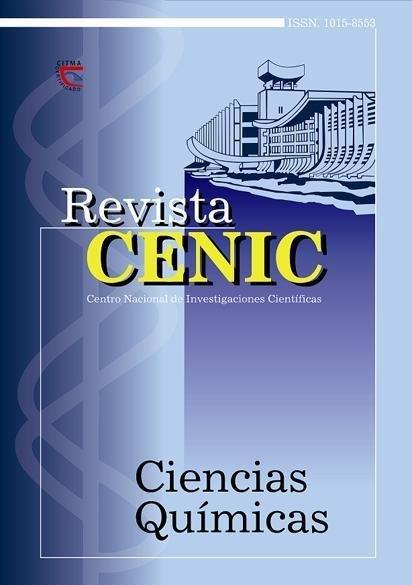Desarrollo y validación de un método analítico para la deterninación de disolventes residuales por Espacio de Cabeza Estático-Cromatografía Gaseosa Capilar en policosanol
Abstract
In the process of policosanol obtainment the solvents n-hexane and acetone are used and they are eliminated later on in the corresponding drying stages. The objective of this work was to develop and to validate an analytical method that allowed the determination of residuals of solvents in policosanol lots using the technique of HeadSpace Static - Gas Chromatography Capillary. The parameters of operation of the gas chromatograph it as well as those of the analysis for headspace, were optimized: balance temperature among the phases: 30 ºC; temperature of the transfer line: 150 ºC; temperature of the commutation valve: 120 ºC; time of balance among the phases: 10 min; time of injection: 2 s and flow of haulage gas (argon): 5 mL/min. The validation criteria were the following: linearity, proportionality, accuracy, sensibility and precision in repeatability and reproducibility conditions and the limits of detection. In all cases acceptance criteria were the same as the Catalan Section of Standards of Good Manufacture and Control of Quality (Validation of Analytical Methods). In the linearity study the coefficients of variation of the response response factors were lower than 5 % and acceptable values for the variance of the total experimental error and the deviation of standard of the slope, which denotes a good linearity. In the proportionality it was proven that the system doesnt present any bias.

Downloads
Published
How to Cite
Issue
Section
License
Copyright (c) 2005 Copyright (c) 2005 Revista CENIC Ciencias Químicas

This work is licensed under a Creative Commons Attribution-NonCommercial-ShareAlike 4.0 International License.
Los autores que publican en esta revista están de acuerdo con los siguientes términos:
Los autores conservan los derechos de autor y garantizan a la revista el derecho de ser la primera publicación del trabajo al igual que licenciado bajo una Creative Commons Atribución-NoComercial-CompartirIgual 4.0 que permite a otros compartir el trabajo con un reconocimiento de la autoría del trabajo y la publicación inicial en esta revista.
Los autores pueden establecer por separado acuerdos adicionales para la distribución no exclusiva de la versión de la obra publicada en la revista (por ejemplo, situarlo en un repositorio institucional o publicarlo en un libro), con un reconocimiento de su publicación inicial en esta revista.
Se permite y se anima a los autores a difundir sus trabajos electrónicamente (por ejemplo, en repositorios institucionales o en su propio sitio web) antes y durante el proceso de envío, ya que puede dar lugar a intercambios productivos, así como a una citación más temprana y mayor de los trabajos publicados (Véase The Effect of Open Access) (en inglés).













